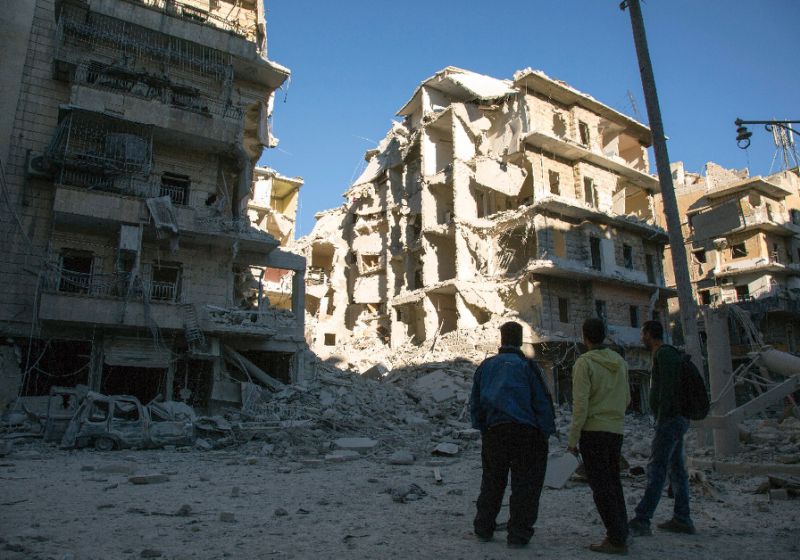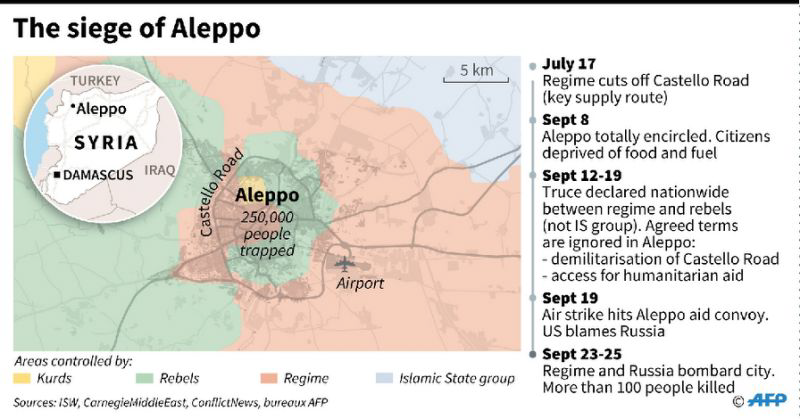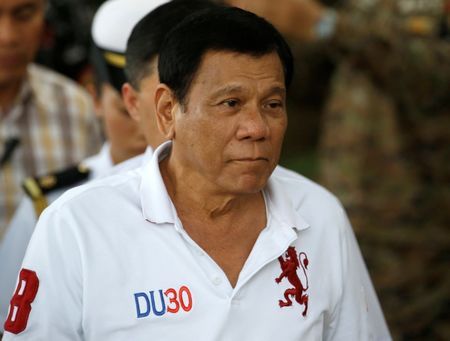
President Rodrigo Duterte arrives at the military's Camp Tecson to talk to soldiers in San Miguel, Bulacan in northern Philippines September 15, 2016. REUTERS/Erik De Castro
MANILA (Reuters) - Philippine President Rodrigo Duterte said on Monday he would visit Russia and China this year to chart an independent foreign policy and "open alliances" with two powers with historic rivalries with the United States.Duterte said the Philippines was at the "point of no return" in its relations with former colonial ruler the United States, so he wanted to strengthen ties with others, and picked two global powers with which Washington has been sparring with on the international political stage.
He last week declared he would soon - and often - visit China, with which ties remain frosty over a South China Sea arbitration ruling won by the Philippines in July. He said Russian Prime Minister Dmitry Medvedev was expecting him in Moscow.
China claims most of the South China Sea, through which more than $5 trillion of trade moves annually. Brunei, Malaysia, the Philippines, Taiwan and Vietnam have rival claims.
An arbitration court in The Hague in July invalidated China's claims to the waterway in a case brought by the Philippines, a ruling that Beijing refuses to recognize.
"I am ready to not really break (U.S.) ties but we will open alliances with China and... Medvedev, he is awaiting there for my visit," Duterte told reporters, adding he would open up the "other side of the ideological barrier".
He welcomed investment and shrugged off rating agency Standard and Poor's concerns last week about the Philippine economy on his watch and his unpredictability.
"Never mind about the ratings," he said. "I will open up the Philippines for them to do business, alliances of trade and commerce."
The peso fell to its lowest since 2009 on Monday and foreign investors have dumped local shares for six straight weeks, worried about Duterte's anti-U.S. rhetoric and brutal war on drugs, which has alarmed rights groups at home and abroad.
Duterte also said he would open up telecoms and airlines, which are two domestic sectors long controlled by local players and criticized for being uncompetitive. He did not elaborate.
The volatile leader's vitriol against the United States has become a near-daily occurrence and source of both amusement and concern. On Monday he accused Washington of "hypocrisy" and said Americans were still "lording it over us".
His latest swipe included ruling out participation in a maritime conflict should it be initiated by the United States, despite a 1951 treaty between the two countries under which Duterte said Manila was legally obligated to back Washington.
"I am about to cross the Rubicon between me and the U.S.," he said," without elaborating. "It's the point of no return."
It is unclear whether Duterte's outbursts will impact relations between the two counties. Militaries of both sides are due to carry out joint exercises in the first half of October.
The U.S. embassy in Manila on Monday announced two-week deployment of a pair of C130 planes and 100 troops at an air base in the central Philippines, the third of its kind this year, as part of a rotational troops agreement.
Separately, Duterte said the United Nations, European Union and United States would get a free hand to investigate the killings in his anti-narcotics campaign, but only under Philippine laws.
Deaths in the campaign have averaged over 40 a day since Duterte took office on June 30.
(Reporting By Manuel Mogato and Enrico dela Cruz; Editing by Martin Petty and Nick Macfie)
Honda CR-V vs. Toyota RAV4: Which Should You Buy?
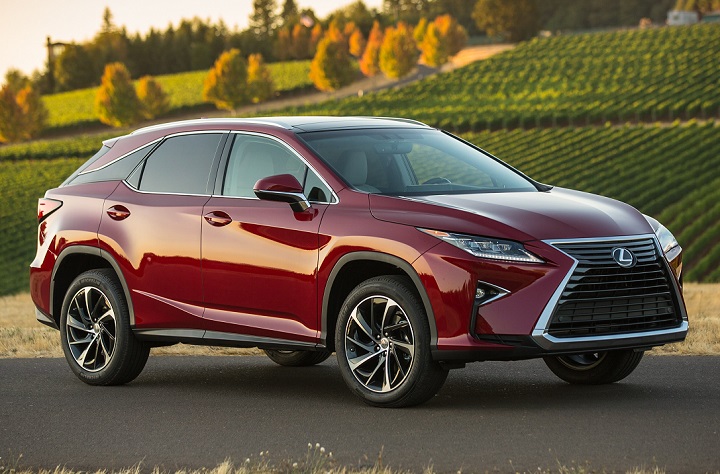
Within the popular small SUV category, the Honda CR-V and Toyota RAV4 are two of the sales leaders year over year. And it shouldn’t be a big surprise why consumers choose these models over their competitors.
Both are roomy, comfortable, and versatile vehicles that come from trustworthy brands with a well-deserved reputation for fuel economy and reliability. As is common in the small SUV segment, either front- or all-wheel drive is available, meaning consumers in both the Snow Belt or the Sun Belt can get the added security of all-weather traction, or the benefit of slightly better fuel economy in front-drive only.
Though there are many worthy small SUVs on the market—and with all due respect to the highly ranked Subaru Forester—one of the most common questions we receive from Consumer Reports readers is whether they should go with the Honda or the Toyota.
How They Match Up
When comparing them side by side along specs and dimensions, the CR-V and RAV4 match up very closely. Even in terms of acceleration (about 9 seconds in 0 to 60 mph acceleration), fuel economy (24 mpg overall), and stopping distances as measured in our testing, they’re right on top of one another. But these two stalwarts diverge quite significantly in the real world.
The CR-V’s transmission is a continuously variable type that tends to amplify engine noise. By contrast, Toyota uses a conventional six-speed automatic in the RAV4 that makes the driving experience feel more natural. Incidentally, the RAV4 is also available as a hybrid, which got an impressive 31 mpg in our testing. It will use between 110 and 125 fewer gallons over 12,000 miles than the either the CR-V or the regular RAV4.
Both models have received a midcycle freshening, which for the Honda turned out to be less successful than it has for the Toyota. Whereas the CR-V's suspension became stiffer, the RAV4's got more comfortable. Quite a bit of road noise gets into the CR-V’s cabin, making it the louder car between these two.
It’s easier to get a power seat with lumbar support adjustment in a midtrim CR-V EX. In the RAV4, you’d have to opt for the top-line Limited to get that feature. Otherwise, the standard seat is not very supportive. And young parents should note that we had difficulty getting some child seats to fit correctly and securely in the RAV4. The CR-V has a neat trick up its sleeve: a button that folds down a section of the rear seat in one fell swoop.
With the CR-V, the EX and above trims come with Honda’s infuriating and complicated touch-screen infotainment system. By contrast, the RAV4’s infotainment touch screen is much easier to use.
On the safety front, both SUVs are awarded a Top Safety Pick by the Insurance Institute for Highway Safety. However, for 2017 Toyota has made it easy to get advanced safety systems by including the Toyota Safety Sense P package standard on all versions of the RAV4. This package includes forward-collision warning and automatic emergency braking. Honda forces buyers to choose the Touring trim in order to get forward-collision warning and automatic emergency braking on the current 2016 model.
In addition, you can’t get a conventional blind-spot monitoring system on any CR-V. With EX and above, you’re forced into the LaneWatch system, which shows you—on the center screen—a video feed of what’s in your right-side blind spot. That novelty is no substitute for a full blind-spot monitoring system that covers both sides of the vehicle.
Though the CR-V starts at an enticingly low price, Honda is very rigid with its options structure. There is no à la carte optioning here. So you’re forced to decide whether you want to hold firm to your budget—and possibly forgo a feature—or spend more money and move up to a pricier version to get the features you want.
Base pricing is similar, with a front-drive CR-V starting at $24,745. Add all-wheel drive and that jumps to $26,045. The RAV4 with front-wheel drive is about $25,850, and all-wheel drive brings the price to $26,690. The CR-V tops out at $34,395 for the AWD Touring trim; the top RAV4 Platinum starts at $37,090. The RAV4 Hybrid starts out at $29,970, with standard all-wheel drive and XLE trim.
Because the CR-V is an older design that is well into its model cycle and the 2017s arrive this fall, the leftover 2016 models have a good deal of negotiating room based on a recent Consumer Reports analysis of transaction prices. The loftier asking price for the RAV4 reflects that it has more shelf life left.
One thing to keep in mind when shopping: Toyota includes a two-year/25,000-mile, no-cost maintenance plan on every new model. Honda doesn’t offer anything similar. That can go a long way toward offsetting the price difference.
Last—and what might be the knockout punch for many potential buyers—taking reliability into account, the RAV4’s record has been much better than average, and the CR-V’s record has bounced between average and above average.
In the end, the RAV4 outscores the CR-V to the tune of 76 vs. 69. If it were our choice, we’d be heading to the Toyota dealership.
Keep in mind that there are also other highly competitive small SUVs you shouldn’t rule out, including the Subaru Forester, Kia Sportage, Mazda CX-5, Hyundai Tucson, Nissan Rogue, and Ford Escape.
Aleppo reels from strikes as Russia accused of 'war crimes'
More than 300,000 people have been killed and millions driven from their homes since the start of the Syrian conflict in 2011
Aleppo (Syria) (AFP) - Residents of Syria's Aleppo faced worsening food and medical shortages on Monday as warplanes again pounded the city after Western powers at the UN accused Russia of war crimes.
A fresh wave of intensive air strikes hit the city's opposition-controlled east from dawn on Monday, an AFP correspondent in the city said, on the morning after Moscow and Damascus faced fierce criticism at the UN Security Council.
During an emergency session US Ambassador Samantha Power accused Russia of "barbarism", while the British and French envoys went even further.
"War crimes are being committed here in Aleppo," French Ambassador Francois Delattre said, while Britain's envoy spoke of "a new hell" unleashed on Syrians with bunker-busting bombs and more sophisticated weaponry used to pummel residential areas.
"It is difficult to deny that Russia is partnering with the Syrian regime to carry out war crimes," said British Ambassador Matthew Rycroft.
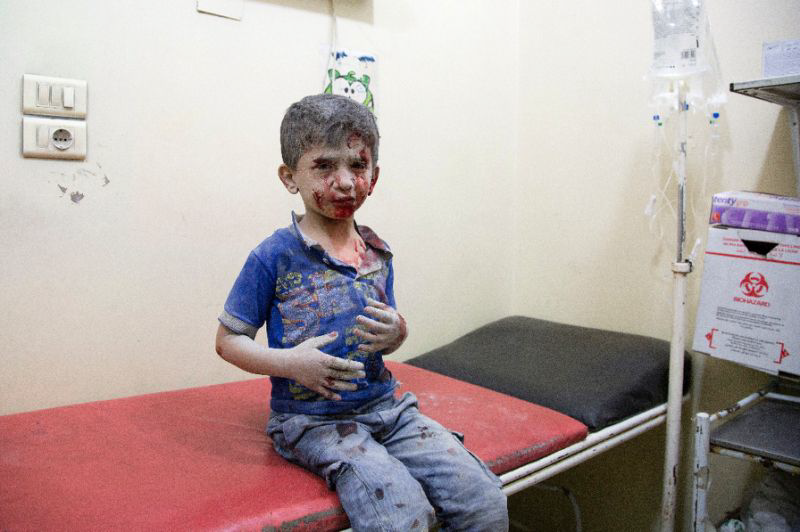
Moscow hit back at the accusations on Monday, with Kremlin spokesman Dmitry Peskov denouncing "the overall unacceptable tone and rhetoric of the representatives of the United Kingdom and the United States, which can damage and harm our relations".
- Lack of blood, more amputations -
The worst violence to hit the divided city in years continued on Monday, with residents warning that stores of food and vital medical supplies were dwindling to nothing.
Monday's air strikes were particularly heavy on two rebel-held districts, Al-Mashhad and Sayf al-Dawla, and sparked large fires, the AFP correspondent said.
The Syrian Observatory for Human Rights, a Britain-based monitor, said "dozens of raids" had hit districts of east Aleppo after midnight on Sunday, with many wounded and at least two civilians killed.
It was the fourth day of intense air raids on the city since a defiant Syrian regime launched a new assault, vowing to retake all of Aleppo following the collapse early last week of a short-lived ceasefire brokered by Russia and the United States.
The Observatory said Monday that at least 128 people, nearly all civilians, had been killed in Syrian and Russian raids on eastern Aleppo since late Thursday.
Among the dead were 20 children and nine women, said Observatory director Rami Abdel Rahman.
At least 36 civilians, including 11 children and five women, were also killed in raids targeting rural areas of Aleppo province, he said.
A Syrian military source told AFP regime forces had no intention of letting up on rebel-held areas.
"The air force will bomb any terrorist movements, this is an irreversible decision," the source said, reiterating that the regime's goal was to "recapture all regions of Syria" outside its control.
A medical source in rebel-held Aleppo said hospitals were struggling to deal with a huge number of casualties.
"Hospitals that are still in service are under a lot of pressure due to the significant number of wounded in recent days, and the major shortage of blood," the source told AFP.
"Because of this, serious injuries are requiring immediate amputations," he said.
- 'End the nightmare' -
With Aleppo back under siege since regime forces again fully surrounded the city in early September, residents were having to deal with food shortages and skyrocketing prices as well as intensifying violence.
The price of a portion of bread had risen to 500 Syrian pounds ($1) from 350 Syrian pounds last week, the AFP correspondent said, and food was becoming increasingly difficult to find.
Several charity kitchens in eastern districts were no longer operating because of the danger of air strikes.
Water supplies also remained cut to many areas after pumping stations were damaged at the weekend.
"We endured through years of bombardments and did not leave Aleppo. But now there is no bread, no drinking water, nothing in the markets. The situation is getting worse every day," Hassan Yassin, a 40-year-old father of four in the Ferdus neighbourhood, told AFP.
Aleppo has been divided since mid-2012 between government control in the west and rebels in the east and has been a key battleground in Syria's five-year war.
At the Security Council meeting, Power voiced some of the strongest criticism yet of Russia's support for President Bashar al-Assad's regime.
"What Russia is sponsoring and doing is not counter-terrorism. It is barbarism," she said.
Russian launched air strikes in support of Assad last September, helping regime forces to regain ground lost to a wide range of opposition forces.
UN Secretary General Ban Ki-moon has also warned that the use of advanced weaponry against civilians could amount to war crimes.
Ban called on world powers to "work harder for an end to the nightmare" in Syria that has left more than 300,000 people dead and driven millions from their homes.
PAL plane safely lands in Manila after smoke seen in cabin
MANILA, Philippines (AP) — A Philippine Airlines plane en route to Haneda airport in Tokyo returned to Manila's airport 20 minutes into its flight Monday after the crew detected smoke in the cabin. The plane with 235 people on board landed safely and there were no reports of injury.
Firefighters and rescue teams were dispatched but the plane landed without incident.
Airline spokeswoman Cielo Villaluna said the A340-300 aircraft with 222 passengers and 13 crew members returned "due to a technical concern."
She said the plane is being examined to determine why it had to turn back and the cause of the smoke was not known.
Passengers will continue with their journey Monday afternoon on a replacement flight, she added.
Last week, a Saudi Arabian Airlines pilot mistakenly pressed a hijack warning button on a flight approaching Manila's airport, where officials mobilized commando forces and isolated the jet after it landed.
The pilot confirmed to the airport tower that he pressed the distress button but did not say until the plane was parked that it was a mistake, the airport's aviation security chief Mao Aplasca said.
Samsung delays South Korea re-start of Note 7 sales by 3 days

SEOUL (Reuters) - Tech giant Samsung Electronics Co Ltd said on Sunday it was delaying the start of new Galaxy Note 7 smartphone sales in South Korea by three days to October 1, a move it says is needed for speedy completion of the ongoing recall in the country.
Samsung announced on September 2 a recall of at least 2.5 million Galaxy Note 7 smartphones in 10 markets, including South Korea, due to a faulty battery causing the phones to catch fire, offering refunds or replacement devices using safe batteries.
The firm hopes to complete the recall quickly and restart sales in the fourth quarter to salvage earnings, but the latest hitch in South Korea underscore continuing challenges in those efforts.
Though product exchanges in South Korea began on Monday, only about 200,000 affected customers have turned in their devices - which Samsung says represents half of affected customers and a recall pace that is much slower than other markets such as Singapore and the United States.
"The recall rate will likely fall sharply should new sales have resumed on Sept. 28," the company said. Affected customers would no longer be able to exchange their devices through domestic carriers starting on October 1, making the process more difficult.
Samsung hopes to restart new sales in affected markets once it makes enough progress with the recalls, having announced plans to restart sales in Australia and Singapore in October, but the nearly month-long recall process has provided additional stumbles and embarrassment for the firm.
Continued reports of Note 7 fires and damages after the recall announcement, along with warnings or outright bans from aviation authorities on the use or charging of the Note 7 on aircraft, forced Samsung to ask affected customers to immediately turn off their phones to prevent further damage.
Samsung apologised on Sunday for the confusion caused by the delay and said it would do its best to resolve the current Note 7 situation quickly.
(Reporting by Se Young Lee; Editing by Jacqueline Wong)



